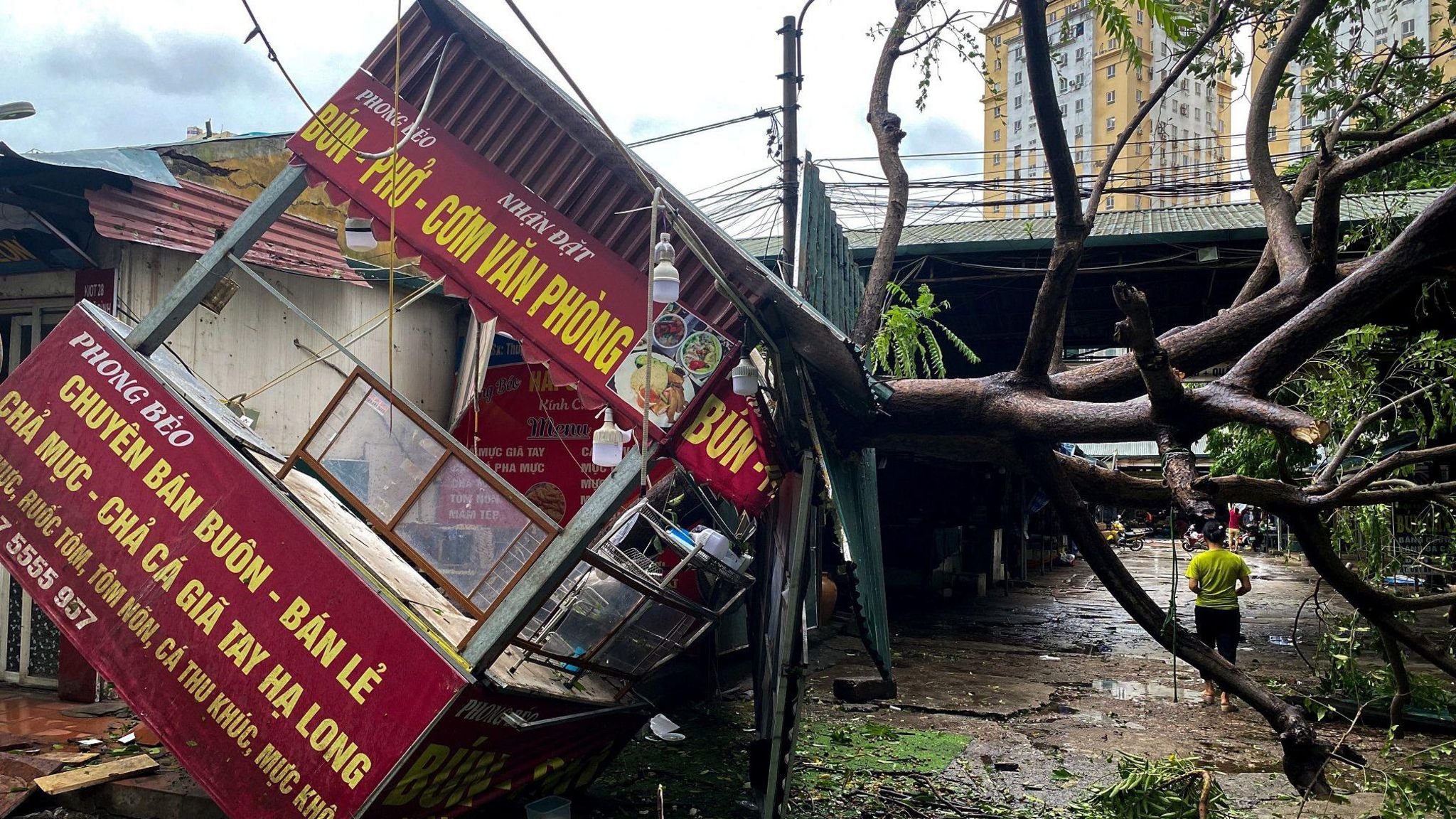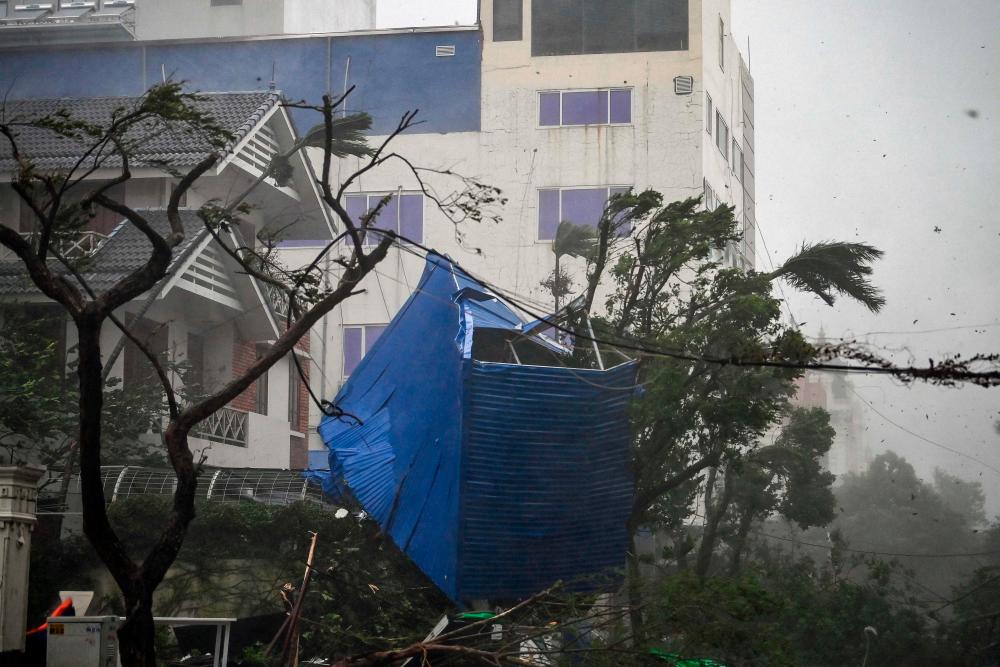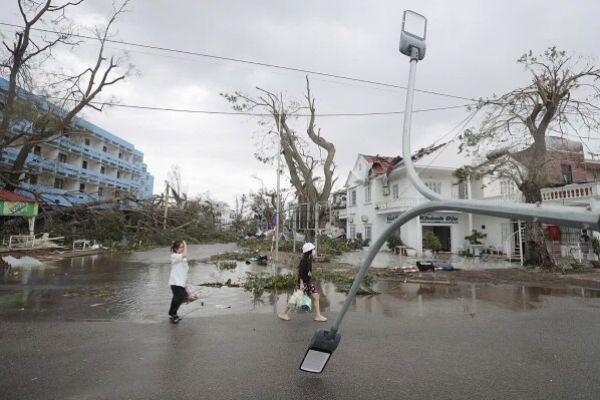Typhoon Yagi, one of the most powerful storms to hit Southeast Asia in recent years, has left a trail of destruction across Vietnam, claiming 59 lives and injuring hundreds. The typhoon, which made landfall on the central coast of Vietnam, brought with it torrential rains, fierce winds, and devastating floods that have overwhelmed infrastructure, displaced thousands, and left the nation grappling with a humanitarian crisis.
This article delves into the details of the storm’s impact, the response efforts underway, and the long-term consequences for the people and economy of Vietnam.
The Storm's Path and Devastation
Typhoon Yagi, classified as a Category 4 storm, formed in the Pacific Ocean before intensifying and heading towards Vietnam. Meteorologists had predicted its destructive potential as it gathered strength, but even with advanced warnings, the storm’s sheer force caught many communities off guard. Yagi made landfall in the early hours of the morning, striking the provinces of Quang Ngai, Quang Nam, and Da Nang with winds reaching up to 140 kilometers per hour (87 mph).
The storm unleashed torrential rainfall, with some areas recording over 500 millimeters of rain in just 24 hours. This deluge caused widespread flooding, particularly in low-lying areas and along riverbanks. Flash floods and landslides were reported in mountainous regions, burying homes and cutting off entire communities. Roads and bridges were washed away, further complicating rescue and relief efforts.

Humanitarian Toll: Lives Lost and Displaced
The human cost of Typhoon Yagi has been staggering. As of the latest reports, 59 people have been confirmed dead, with the death toll expected to rise as rescue teams reach more remote areas. Many of the victims were caught in flash floods or buried under landslides, while others drowned as rivers overflowed, sweeping away homes and vehicles.
Hundreds of people have been injured, with many suffering from broken bones, lacerations, and other trauma-related injuries caused by falling debris, collapsed buildings, and the violent force of the storm. Hospitals in the affected regions are overwhelmed with patients, and medical supplies are running low.
In addition to the lives lost, tens of thousands of people have been displaced from their homes. Entire villages were submerged in floodwaters, forcing families to flee to higher ground or seek refuge in temporary shelters. The Vietnamese government has set up evacuation centers, but these are already overcrowded, and many lack basic amenities such as clean water, food, and sanitation facilities.
The devastation caused by Typhoon Yagi has been particularly severe for Vietnam’s vulnerable populations, including the elderly, children, and those living in poverty. In many cases, these individuals had little time to prepare or evacuate, leaving them exposed to the full force of the storm.

Economic Impact: A Blow to Agriculture and Infrastructure
Vietnam’s economy, which relies heavily on agriculture, has been hit hard by the typhoon. The central and northern regions of the country, where Typhoon Yagi made landfall, are home to vast rice paddies, fruit orchards, and fishing communities. These areas have suffered significant losses, with thousands of hectares of crops destroyed by floodwaters and high winds.
Farmers in the region, many of whom were already struggling due to previous storms and poor harvests, now face the daunting task of rebuilding their livelihoods. The storm has also caused widespread damage to livestock, with many farmers reporting the loss of cattle, poultry, and fish farms. The economic repercussions of this disaster will likely be felt for months, if not years, as farmers attempt to recover from their losses.
In addition to the agricultural sector, Vietnam’s infrastructure has also been severely impacted. Roads, bridges, and power lines have been destroyed, cutting off access to several rural communities and making it difficult for relief teams to reach the hardest-hit areas. The country’s transportation network has been paralyzed, with many highways submerged under floodwaters and airports temporarily shut down due to the storm.
The estimated cost of the damage caused by Typhoon Yagi is expected to run into the billions of dollars. Repairing the country’s infrastructure and restoring the agricultural sector will require significant investment, both from the government and international aid organizations.
Government and International Response
The Vietnamese government has mobilized its disaster response teams to provide immediate relief to affected communities. Search and rescue operations are underway, with military personnel, police, and volunteers working around the clock to find survivors and provide assistance to those in need. Helicopters have been deployed to reach areas cut off by floods and landslides, while boats and amphibious vehicles are being used to evacuate stranded residents.
Despite these efforts, the scale of the disaster has overwhelmed the government’s resources. Many regions remain inaccessible due to damaged roads and infrastructure, and there is an urgent need for food, clean water, medical supplies, and temporary shelter. The government has appealed for international aid, and several countries and humanitarian organizations have already pledged their support.
The Red Cross, United Nations agencies, and non-governmental organizations (NGOs) are coordinating with local authorities to provide emergency relief. The World Food Programme (WFP) has sent food aid, while the World Health Organization (WHO) is working to provide medical supplies and support to hospitals overwhelmed by the influx of patients. The international community has responded with pledges of financial assistance, with countries such as Japan, the United States, and Australia offering aid packages to help Vietnam recover from the disaster.
The Environmental Factor: Climate Change and Typhoon Frequency
Typhoon Yagi is not an isolated incident; it is part of a worrying trend of increasingly severe storms affecting Southeast Asia, particularly Vietnam. In recent years, the country has experienced a growing number of typhoons and tropical storms, which have caused widespread devastation, particularly in coastal and rural areas. Experts believe that climate change is playing a significant role in the increased frequency and intensity of these storms.
As global temperatures rise, warmer ocean waters provide more energy for storms, allowing them to grow stronger and more destructive. Vietnam, with its long coastline and low-lying terrain, is particularly vulnerable to the effects of climate change. Rising sea levels and increased rainfall during the monsoon season have exacerbated the risk of flooding and storm surges, putting millions of people at risk.
The Vietnamese government has recognized the need to address climate change and has implemented measures to reduce the country’s vulnerability to natural disasters. These include improving early warning systems, building more resilient infrastructure, and investing in flood defenses. However, much more needs to be done to protect communities from the growing threat of climate-related disasters.
A Nation in Mourning, and a Long Road to Recovery
As Vietnam grapples with the aftermath of Typhoon Yagi, the nation is in mourning for the lives lost and the devastation wrought by the storm. Communities across the country have come together to support those affected, with donations of food, clothing, and other essential supplies pouring in from across Vietnam and abroad.
However, the road to recovery will be long and difficult. The immediate priority is to provide relief to those affected by the storm, but in the longer term, Vietnam will need to rebuild its infrastructure, restore its agricultural sector, and ensure that its most vulnerable populations are protected from future disasters.
Typhoon Yagi has once again highlighted the devastating impact of natural disasters on Vietnam and the urgent need for both national and international efforts to address the underlying causes of such calamities, including climate change. As the country works to rebuild, it will also need to strengthen its resilience to future storms, ensuring that the lessons learned from this disaster are used to protect lives and livelihoods in the years to come.



